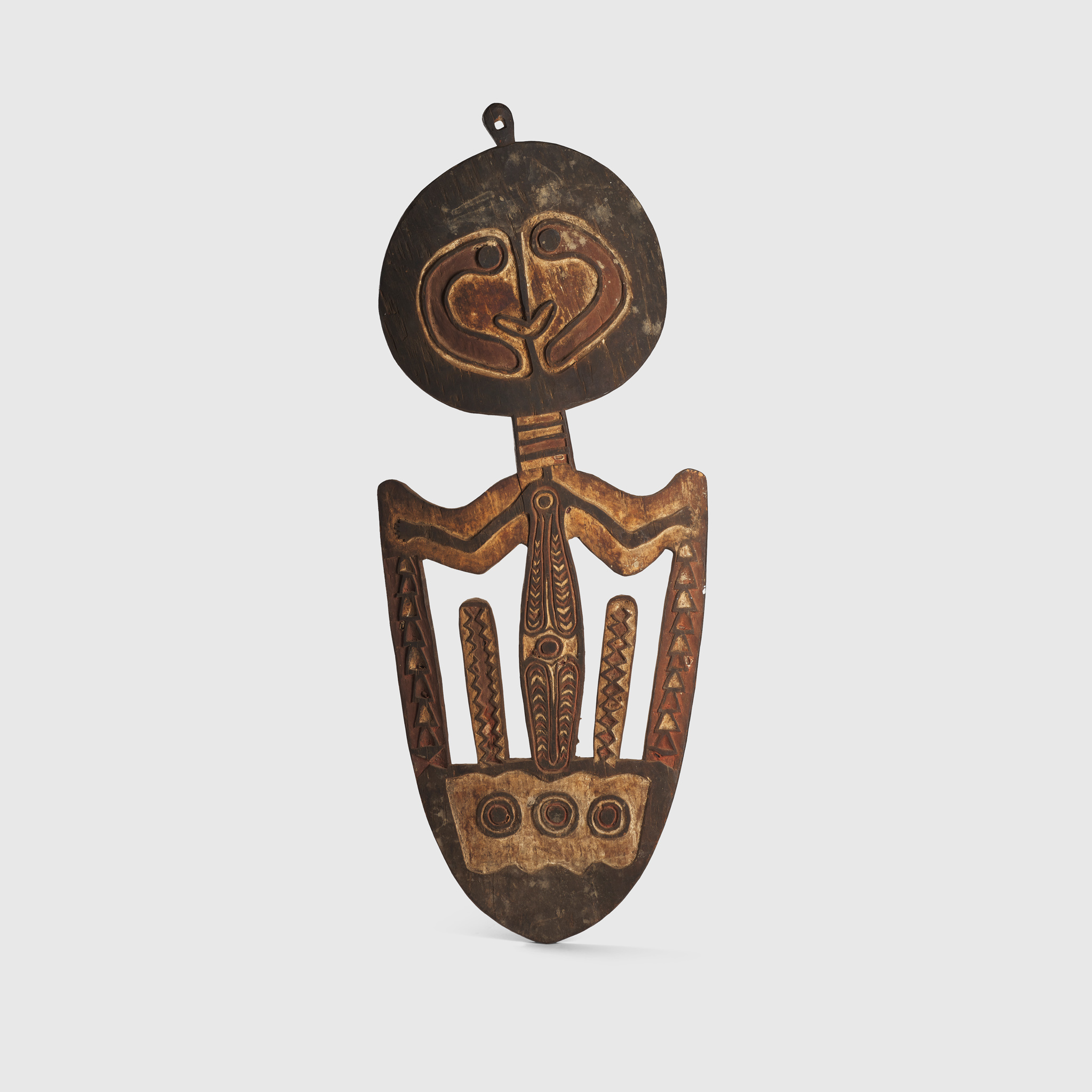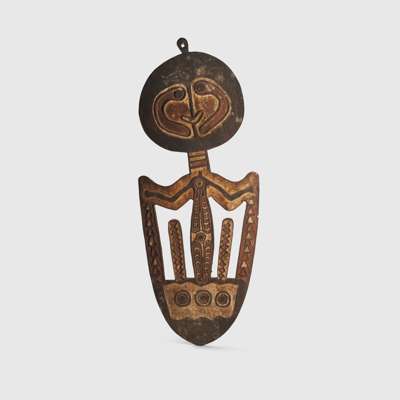
Lot 7

SKULL RACK
KEREWA PEOPLES, TURAMA RIVER, PAPUA NEW GUINEA


Auction: 26 November 2025 at 14:00 GMT
Description
carved wood and pigment, of openwork form depicting a highly stylised anthropomorphic figure with a broad circular head and elongated body, the features carved in bold relief and highlighted in red, white and black pigment
Dimensions
116.8cm tall
Provenance
Published:
Jonathan Fogel (ed.), Agiba and the Skull Cult of the Kerewo, Pebbles Editions, Novato, 2022, pp. 266–267.
Field collected by Dick Randolph, a sawmill owner, on the Turama River circa 1960
Richard Aldrige, Australia
Private Collection, Chicago
Bonhams, 11 November 2010, Lot 6063
Private collection, Europe
Bonhams, New York, African, Oceanic and Pre-Columbian Art, 11th November 2019, lot sold for $10,075
Private collection, United Kingdom
Footnote
"The most important sacred objects of the Kerewa people were agiba, flat board-like figures created for the display of human skulls. In the past, headhunting was an integral element of religious practices throughout the Papuan Gulf,
honoring the spirits (imunu) whose powers sustained the community. Kerewa men formerly lived in communal men’s houses divided into cubicles in which the members of each clan or subclan slept. Each cubicle housed a clan shrine
containing one or more agiba and other sacred objects. The agiba symbolized the vitality and martial prowess of the clan, presiding over the skulls obtained by its members. The skulls were hung from the agiba by loops of rattan placed over the hook-like projections at the base. At times, a platform was constructed below the image to support the weight of the assembled skulls. Only men who had captured an enemy head were entitled to carve agiba. The agiba reportedly represented a spirit that revealed itself to the carver in a dream." Metropolitan Museum, 2025.

